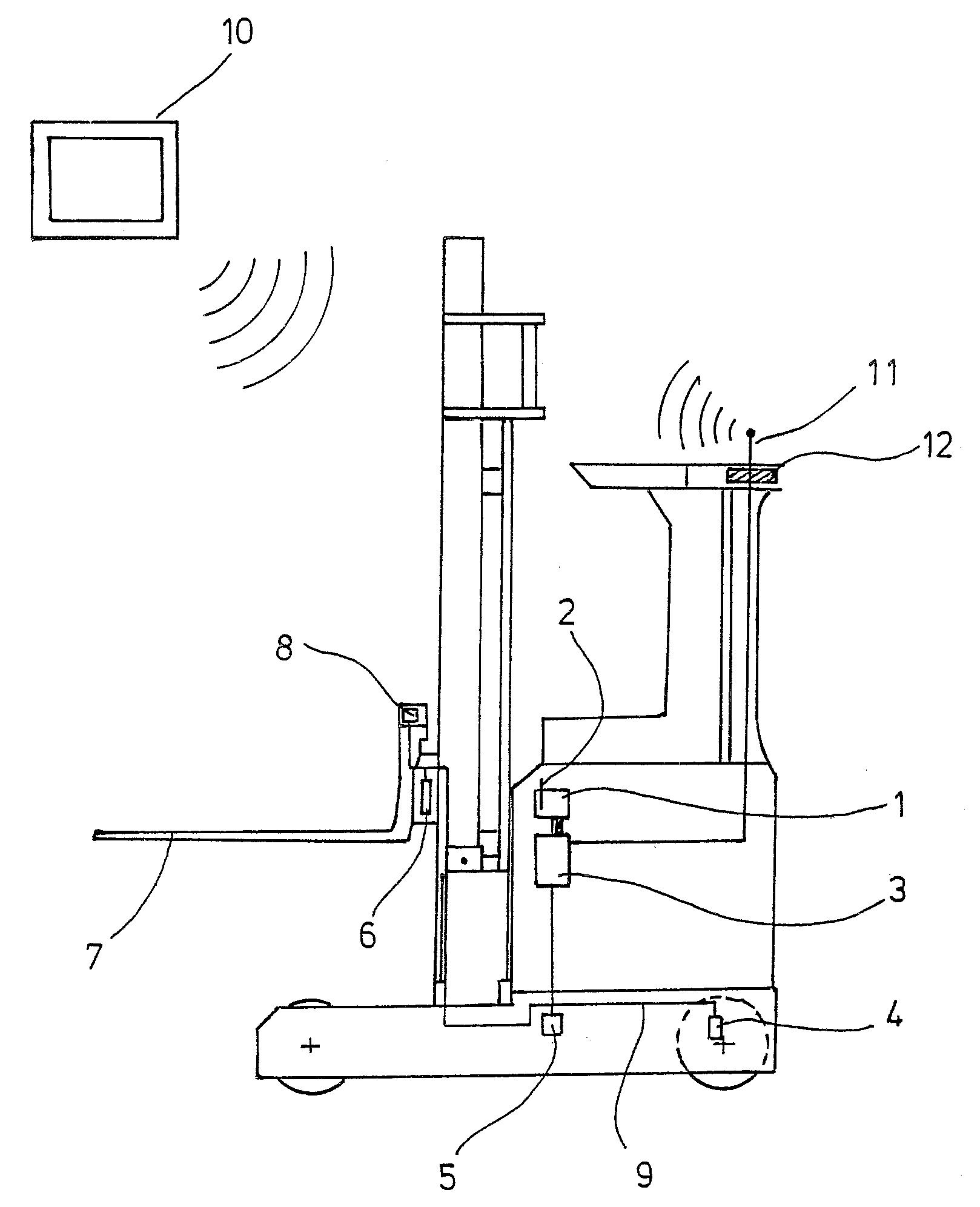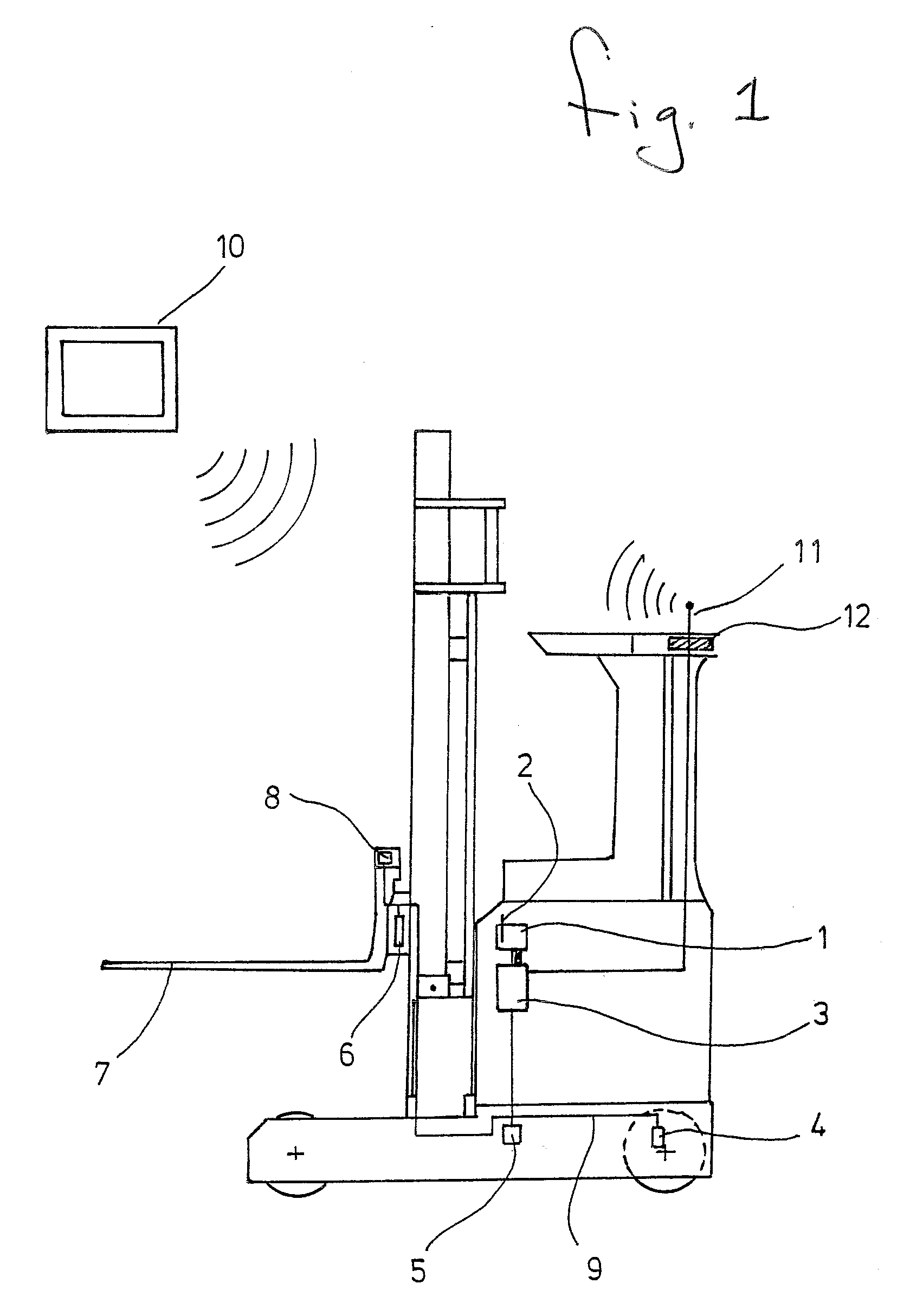Industrial truck with acquirement of utilization data
a technology for utilization data and industrial trucks, applied in the field of industrial trucks with utilization data acquisition equipment, can solve the problems of high cost, low utilization rate, and low utilization rate, and achieve the effect of simple manner and great utilization ra
- Summary
- Abstract
- Description
- Claims
- Application Information
AI Technical Summary
Benefits of technology
Problems solved by technology
Method used
Image
Examples
Embodiment Construction
[0027]While this invention may be embodied in many different forms, there are described in detail herein a specific preferred embodiment of the invention. This description is an exemplification of the principles of the invention and is not intended to limit the invention to the particular embodiment illustrated
[0028]The industrial truck has an electronic memory 1, into which a chip card 2 is put in. On the chip card 2, the utilization protocols are memorised. A control unit 3 is connected with the electronic memory 1. Alternatively, the chip card may be also realised as a RFID card and it may be in communication with the control unit 3 via a suitable sending and receiving unit in a wireless manner.
[0029]The control unit 3 processes the utilization data provided by an equipment for acquisition and establishes a selection of relevant entries for the utilization protocol from the multiplicity of utilization data, for memorising them on the chip card 2 and / or for transferring them to a ...
PUM
 Login to View More
Login to View More Abstract
Description
Claims
Application Information
 Login to View More
Login to View More - R&D
- Intellectual Property
- Life Sciences
- Materials
- Tech Scout
- Unparalleled Data Quality
- Higher Quality Content
- 60% Fewer Hallucinations
Browse by: Latest US Patents, China's latest patents, Technical Efficacy Thesaurus, Application Domain, Technology Topic, Popular Technical Reports.
© 2025 PatSnap. All rights reserved.Legal|Privacy policy|Modern Slavery Act Transparency Statement|Sitemap|About US| Contact US: help@patsnap.com


